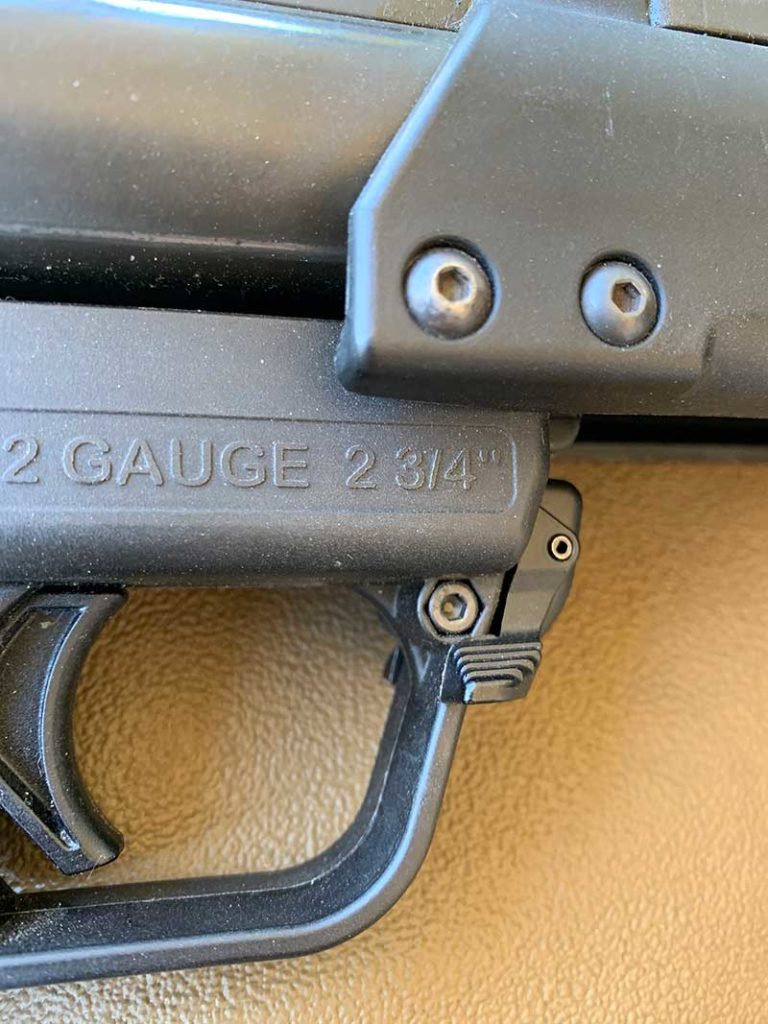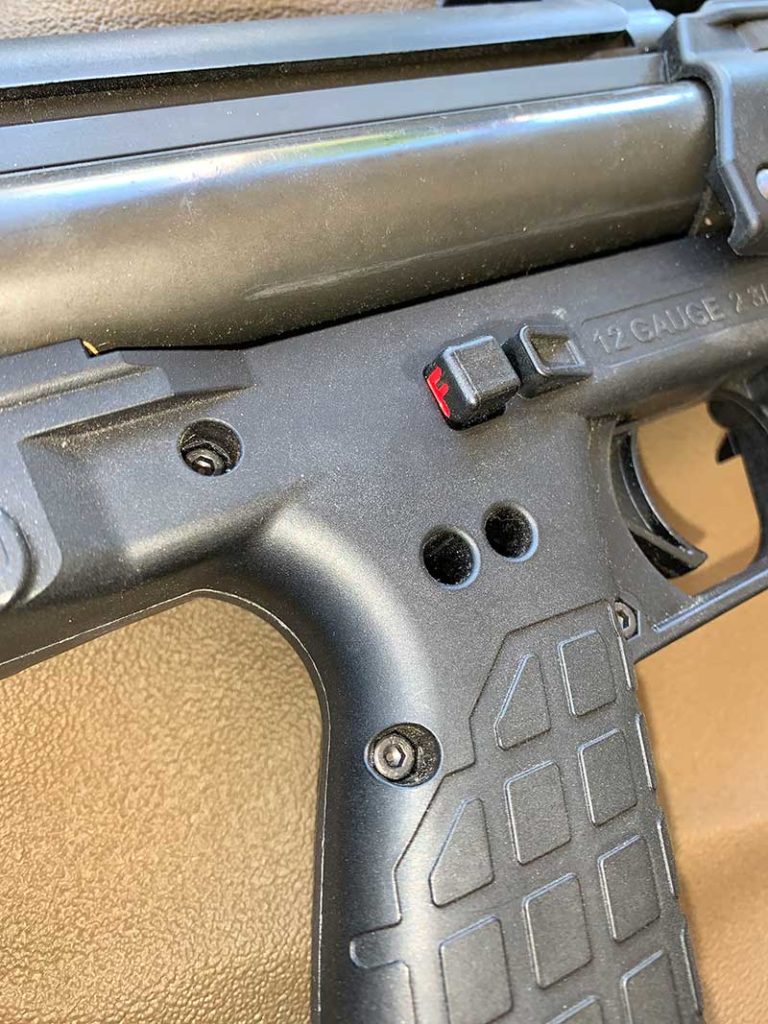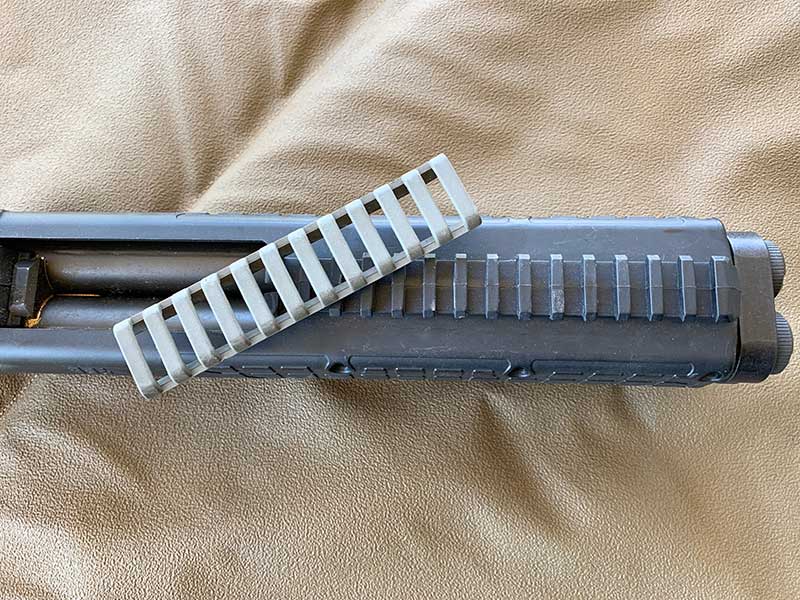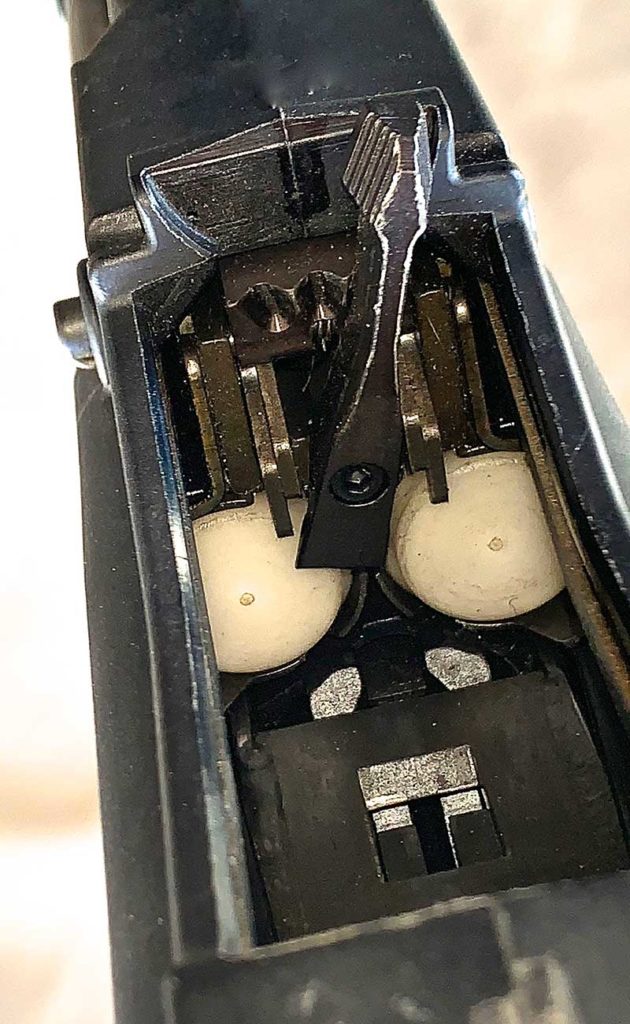
AC-101321-KT-1-800
In 2011 Kel-Tec introduced the KSG—a pump-action bullpup shotgun that held 14 rounds via two tubular magazines.
On first seeing the KSG I was immediately reminded of the Neostead shotgun made in South Africa. Like the KSG, it held it’s shells in two tubes, although the Neostead’s tubes were located on top of the barrel instead of under it and each magazine held six rounds instead of seven. Unlike the KSG and other shotguns, manipulation of the slide-action is exactly opposite of what we’re used to as chambering a round occurring on the rearward stroke.
It was never imported into the United States as it did not meet BATFE’s standard for a sporting shotgun.
Still, the KSG is fairly unique, and I placed an order for one when I examined a sample at the 2011 SHOT Show.
Made from plastic, steel and with a pressed sheet metal action cover, the shotgun will not win any beauty contests. I have no problem with that as it was designed from the ground up as a fighting shotgun—and fighting is never pretty.
The KSG has an overall length of 26.1 inches with an unloaded weight of 6.9 pounds. The cylinder bore barrel is 18.5 inches long. My early example is marked for 2 ¾-inch shells, but current versions are chambered for 3-inch shells. No sights are included.
Being a bullpup, the shells are inserted at the rear of the shotgun. A selector switch between the two mag tubes has three positions. Pushed to the right side (as viewed from the top) it blocks feeding from the left tube. Pushed to the left shells are fed from the left tube. When set in the center, both tubes are blocked from feeding. Shells are ejected downward from the loading port.
The safety is a standard cross bolt type. Pushed to the left is “safe”, pushed to the right is “fire.” The action release is conveniently located at the front of the trigger guard and is ambidextrous.
A 12-inch “T-marked” Picatinny rail sits above the barrel, and a six-inch rail is molded into the forearm. Trigger pull is approximately five pounds.
Most pump shotguns can be held with the primary hand and reloaded easily by sliding the shells along the lifter and into the magazine tube. The easiest way to load the KSG is to hold it with the support hand, turn it upside down and load with the right hand. This allows a quick glance into the action to aid loading. Adding a “tactical” sling will help support the fowling piece.
With the two magazine tubes, two different types of shells can be loaded e.g., buckshot in one and slugs in the other. Under no circumstances should a less-than-lethal round be loaded in one magazine with lethal ammo in the other. Under stress there is simply too much of a chance of inadvertently selecting the wrong magazine.
Due to its compact size, the KSG is ideal for home-defense and where space is at a premium such as an RV. The short length also makes it easy to use from a modified retention position.
Demonstrating it to a private shotgun class one attendee said that it extended far enough that a gun grabber (not the Feinstein type) could grab it. I told him that was possible and the easiest solution would be to pull the trigger, work the action and repeat as necessary.
Most red dot sights sit too high on the rail causing one to raise their head and not get a proper cheek weld. My KSG wears a set of Magpul MBUS backup sights and I can get a good cheek weld with them. I use the large “ghost ring” aperture on the rear sight. Although these sights fold, since they are the primary sighting device they are left in the raised position. I have them sighted in for 50 yards for use with slugs.
One thing that should be pointed out is that the support hand should be held close to the end of the forend or it will be pinched by the receiver and keep the action from being completely cycled.
This puts the support hand very close to the muzzle. A vertical foregrip at the end of the forend to act as a stop—to prevent a hand from wandering in front of the muzzle—might be a good idea.
I would also suggest putting one of the rubber ladder-type rail covers on the forend’s rail. This prevents it from becoming a cheese grater when the action is vigorously worked—and the actions of all pump-actions shotguns should be run with enthusiasm.
You should add a good tactical light for positive identification before shooting—at anything. I use an Elzetta Model B132 that emits 650 lumens in an Elzetta Picatinny mount. No, it won’t light up down the street, but if the bad guy is leaving that’s a good thing—and it’s hard to make a case for self-defense if you pursue him.
If you are looking for a shotgun that rivals most semiautomatic pistols in terms of ammunition capacity check out the Kel-Tec KSG. You may be pleasantly surprised.
SOURCE
KEL-TEC CNC INDUSTRIES, INC.
www.keltecweapons.com
ELZETTA DESIGN, LLC
(859) 707-7471
www.elzetta.com
MAGPUL INDUSTRIES CORP.
www.magpul.com



















